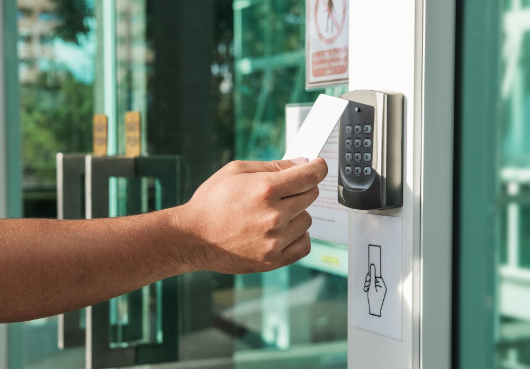
How to Improve Security with Access Control
Table of Contents
- Introduction
- Understanding Access Control
- Benefits of Access Control
- Types of Access Control Systems
- Choosing the Right Access Control System
- Access Control Installation
- User Authentication Methods
- Access Control Policies
- Access Control in Physical Security
- Access Control in Cybersecurity
- Access Control Best Practices
- Integration with Surveillance
- Access Control Maintenance
- Challenges and Solutions
- Conclusion
- FAQs
1. Introduction
Access control is a critical aspect of security that allows you to control who enters your premises or has access to your digital resources. In this comprehensive guide, we will explore how to enhance security through effective access control measures.
2. Understanding Access Control
Access control refers to the practice of regulating who can access certain resources, whether physical spaces or digital data. It is a fundamental component of security that helps prevent unauthorized access.
3. Benefits of Access Control
Access control provides numerous benefits, including enhanced security, improved accountability, and the ability to monitor and record access events.
4. Types of Access Control Systems
There are various types of access control systems, such as biometric, card-based, and keypad systems. Each has its own advantages.
5. Choosing the Right Access Control System
Selecting the right access control system depends on factors like the level of security required, budget, and the specific needs of your organization.
6. Access Control Installation
Proper installation is crucial for the effectiveness of access control systems. Ensure that the system is correctly configured and integrated with existing security measures.
7. User Authentication Methods
Access control relies on user authentication methods, including passwords, PINs, biometrics, and smart cards. Each method has its pros and cons.
8. Access Control Policies
Establish clear access control policies that define who has access to what resources and under what circumstances. Regularly review and update these policies.
9. Access Control in Physical Security
Access control is vital for securing physical spaces like office buildings, warehouses, and data centers. It prevents unauthorized personnel from entering restricted areas.
10. Access Control in Cybersecurity
In the digital age, access control plays a significant role in safeguarding digital assets. It restricts unauthorized users from accessing sensitive data and systems.
11. Access Control Best Practices
Implement best practices, such as the principle of least privilege (POLP), to ensure that users have the minimum access necessary for their roles.
12. Integration with Surveillance
Integrate access control with surveillance systems to enhance security. Access events can be correlated with video footage for a comprehensive view of security incidents.
13. Access Control Maintenance
Regular maintenance and updates are essential to keep access control systems effective and secure. Ensure that software and firmware are up to date.
14. Challenges and Solutions
Explore common challenges in access control, such as credential management and scalability, and discover solutions to address them.
15. Conclusion
Effective access control is a cornerstone of security in both physical and digital realms. By implementing access control measures and staying informed about the latest advancements in security technology, you can significantly enhance your security posture.
FAQs
- What is the principle of least privilege (POLP)?
- POLP is a security concept that restricts user access rights to the minimum levels needed for their job functions, reducing the risk of unauthorized access.
- How can access control benefit small businesses?
- Access control helps small businesses protect their assets, confidential data, and sensitive areas, enhancing overall security.
- Are biometric access control systems secure?
- Biometric systems are generally secure, as they use unique biological characteristics for authentication.
- What should I consider when integrating access control with surveillance?
- Consider the compatibility of systems, storage for video footage, and ensuring that access events are synchronized with video recordings.
- How often should access control policies be reviewed and updated?
- Access control policies should be reviewed and updated regularly, ideally at least once a year or when significant changes occur in your organization’s structure or security needs.
Implementing access control is an essential step toward improving security and safeguarding your assets. By following the guidelines in this article, you can create a more secure environment for your business or personal space.







